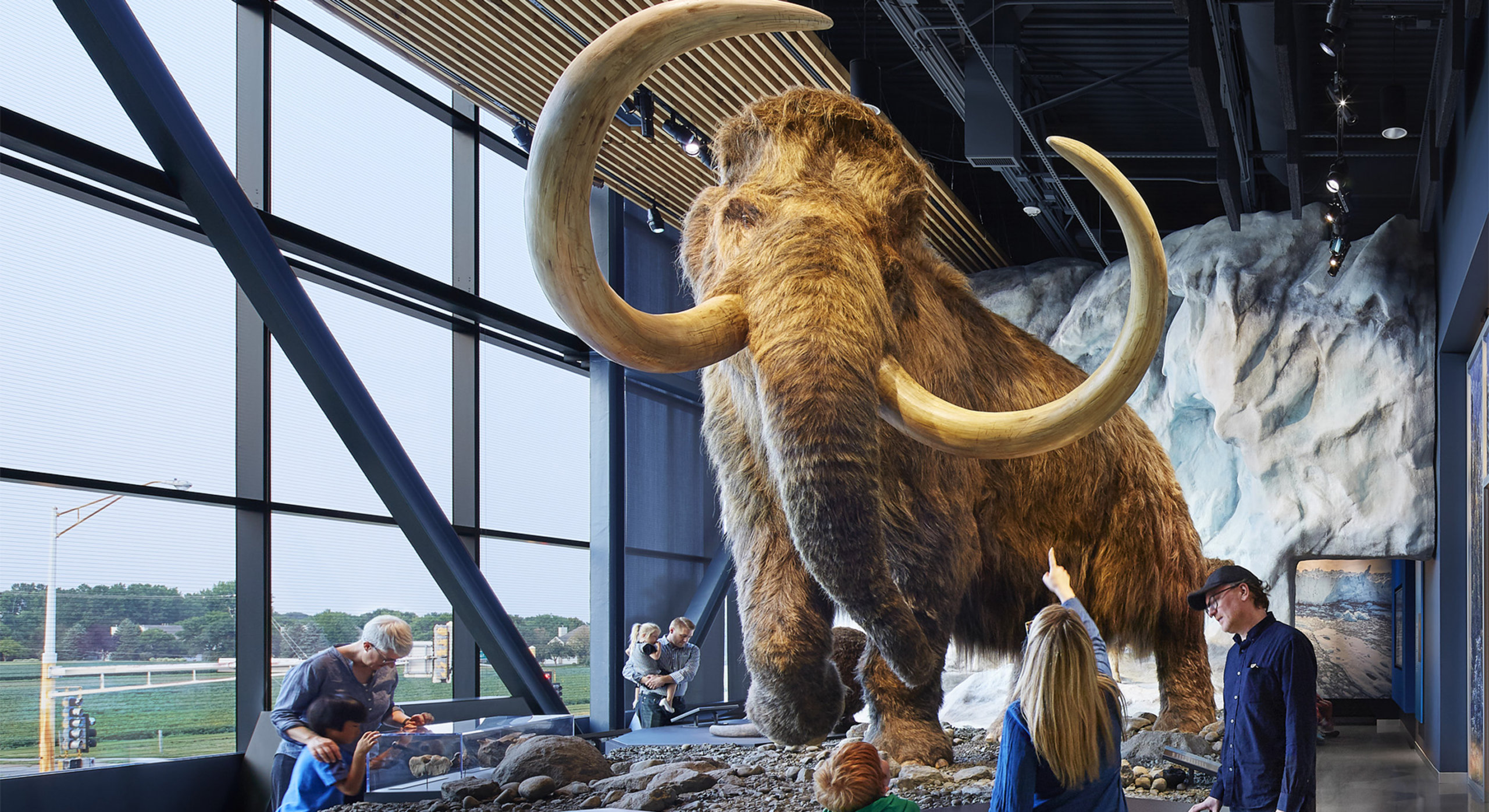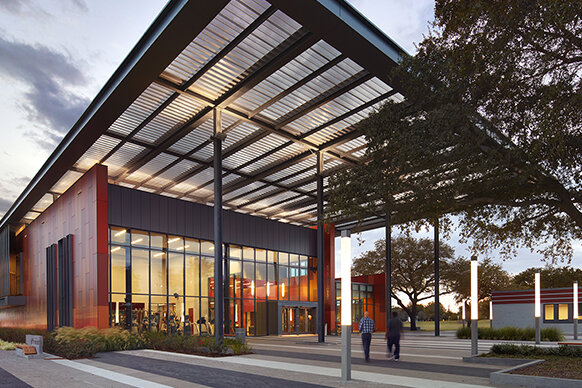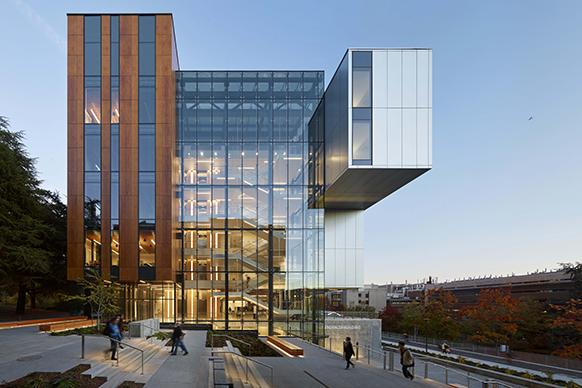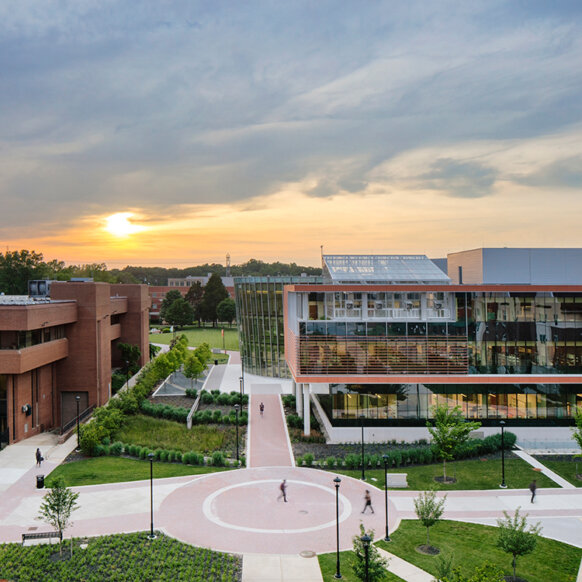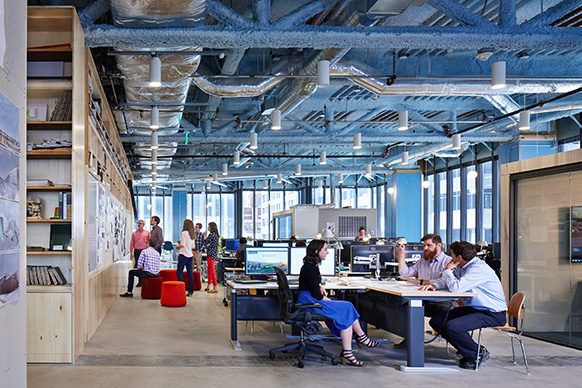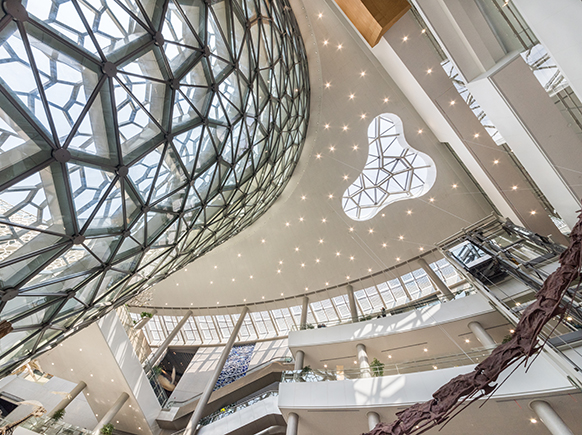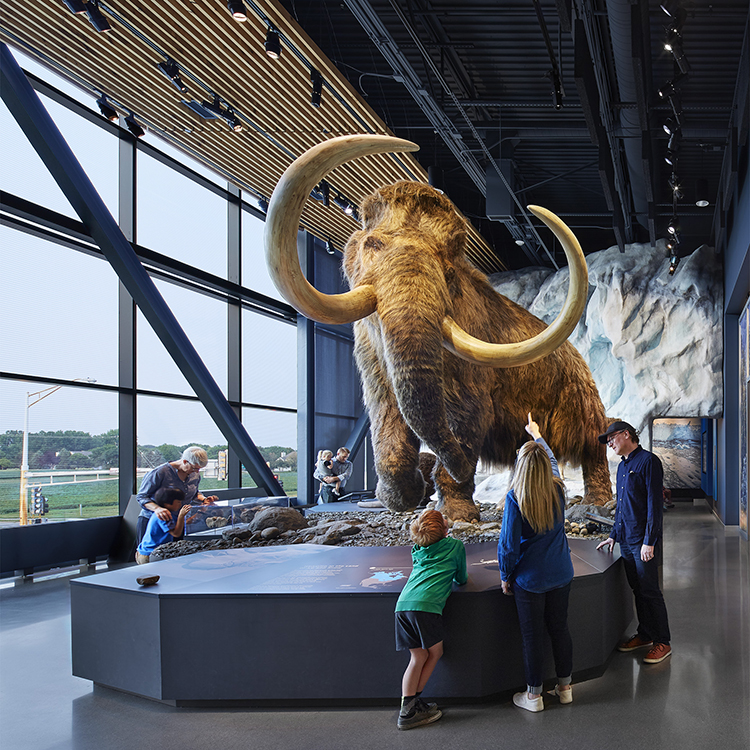
University of Minnesota Bell Museum
The Bell Museum is Minnesota’s official natural history museum and has been preserving and celebrating the state for more than 144 years. Previously housed in a confined building, the new site is designed as a learning landscape—its surfaces configured to tie people, nature, and the environment together.
We created a personal journey of discovery through time, space, and life—told through the lenses of art, science, and culture. This unveiling of “how we know” helps visitors recognize the museum and planetarium as a portal to University of Minnesota research.
Bell’s monumental storybox windows are part of the magnificent personal journey that each visitor takes through the museum. Three monumental glass and wood storyboxes are “lenses” between the interior and exterior spaces inspiring every visitor to connect across time between environmental experiences that are only in the past (within the museum) and environmental experiences that are immediately present (outside the building), informing our collective future.
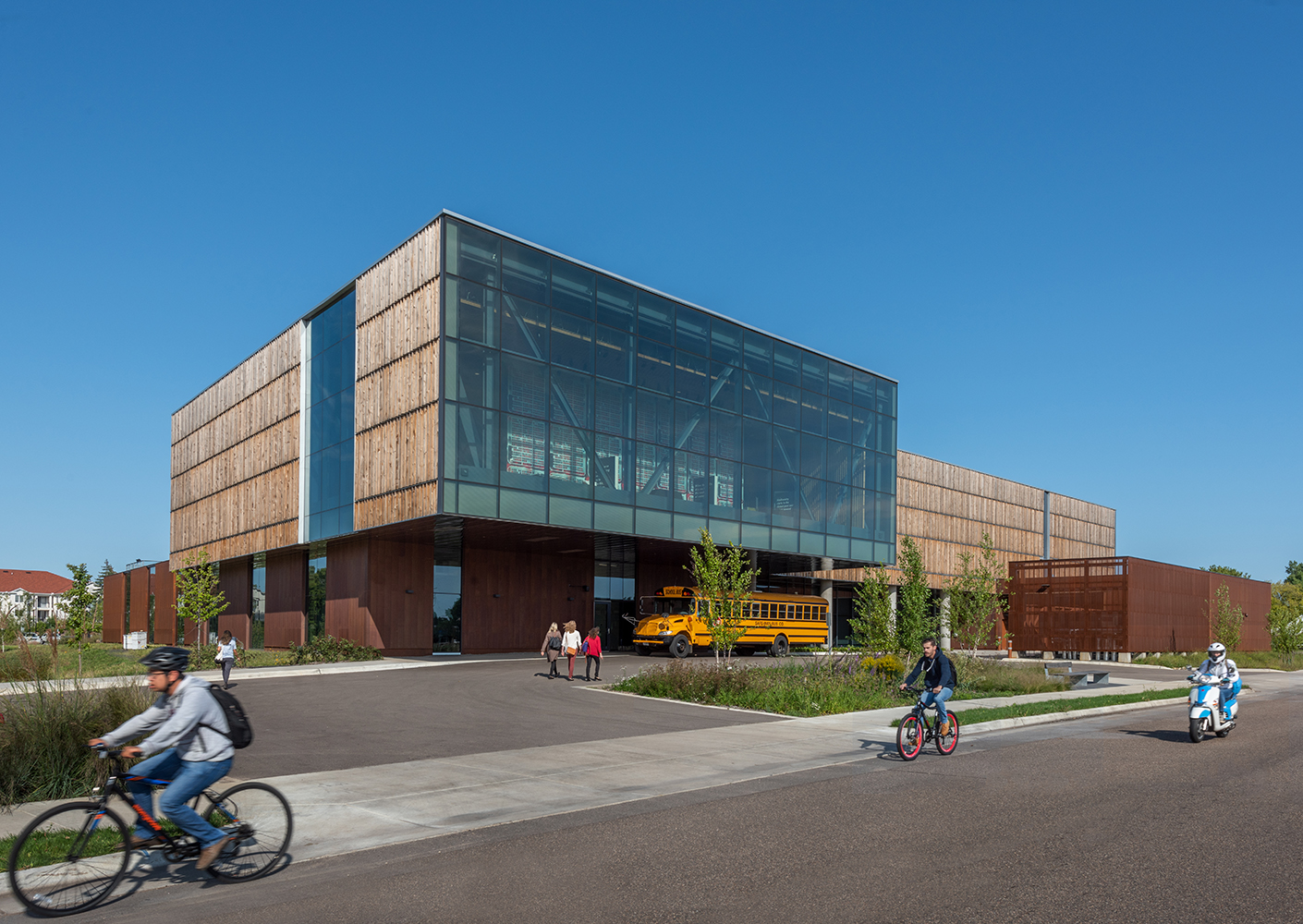
Inspired by the innate storytelling power of Francis Lee Jaques’ historic Minnesota dioramas, the Bell’s monumental storybox windows shape the magnificent personal journey that each visitor takes through the museum.
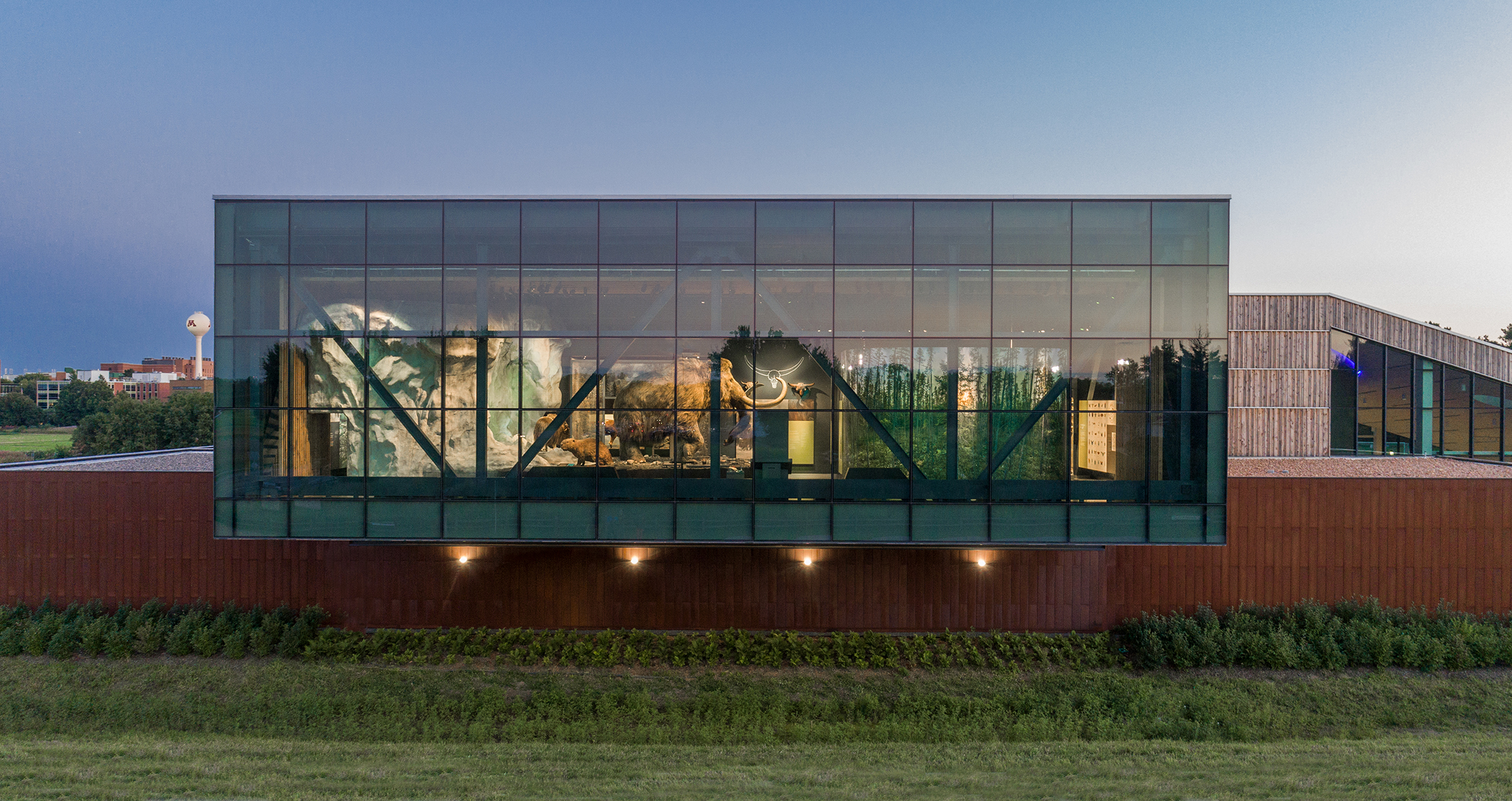
Much of the museum’s exterior is covered with thermally modified white pine wood cladding, harvested from Minnesota forests that are ecologically managed and certified to Forest Stewardship Council criteria (FSC). The landscape surrounding the building includes a diverse blend of drought tolerant native and adapted plants. To mitigate the threat to birds, the architects developed a custom visual frit pattern for the glass that deters bird strikes, and is non-obtrusive to Bell Museum visitors.
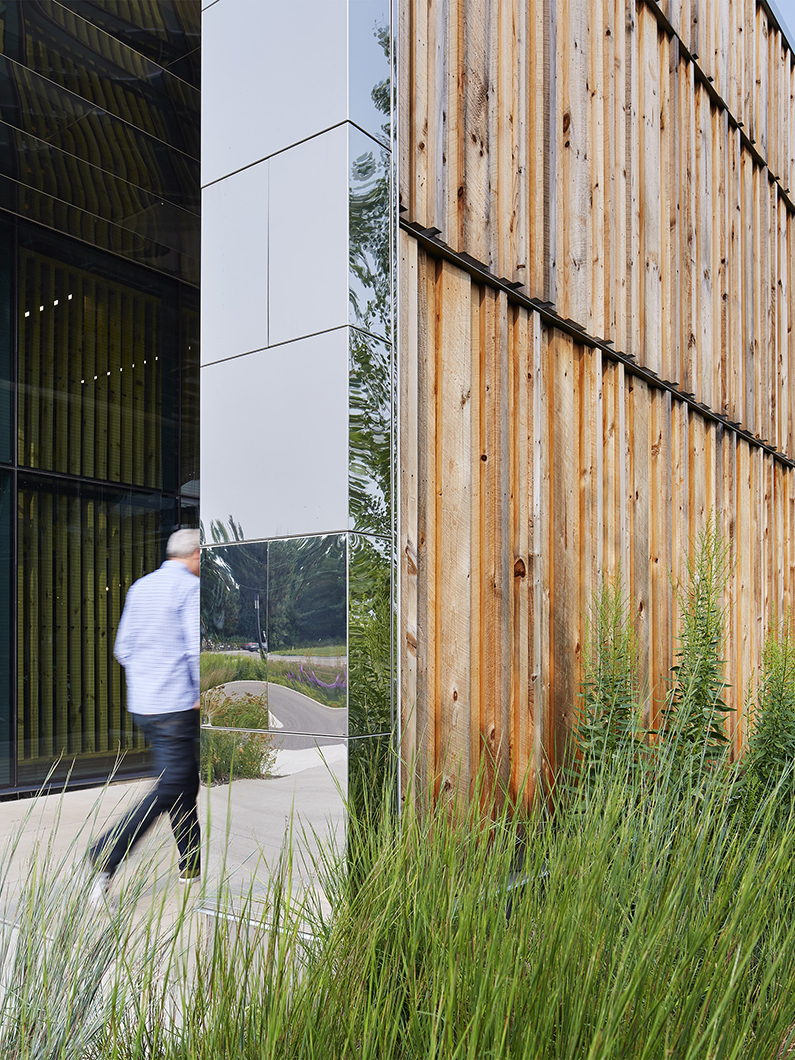
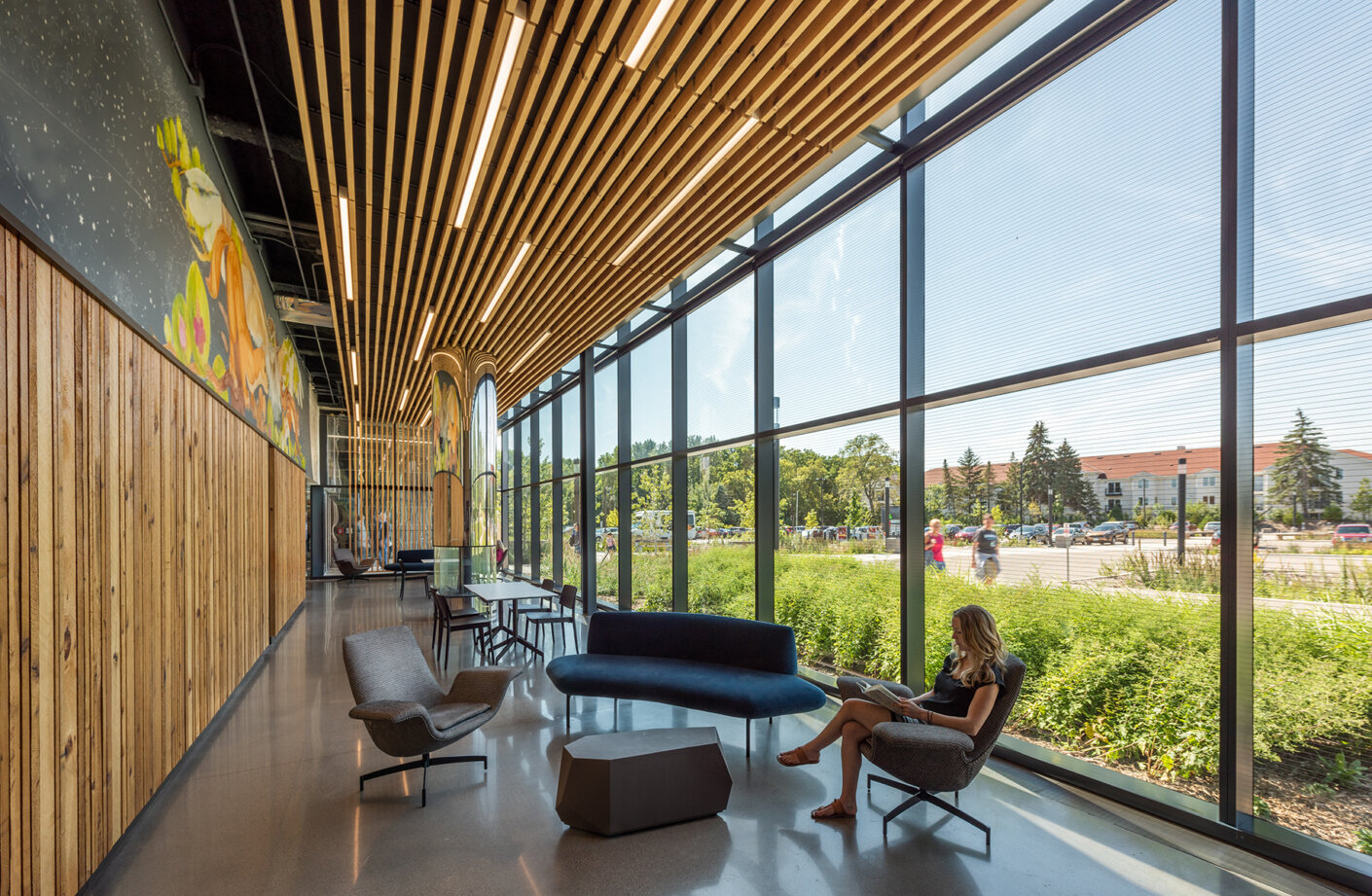
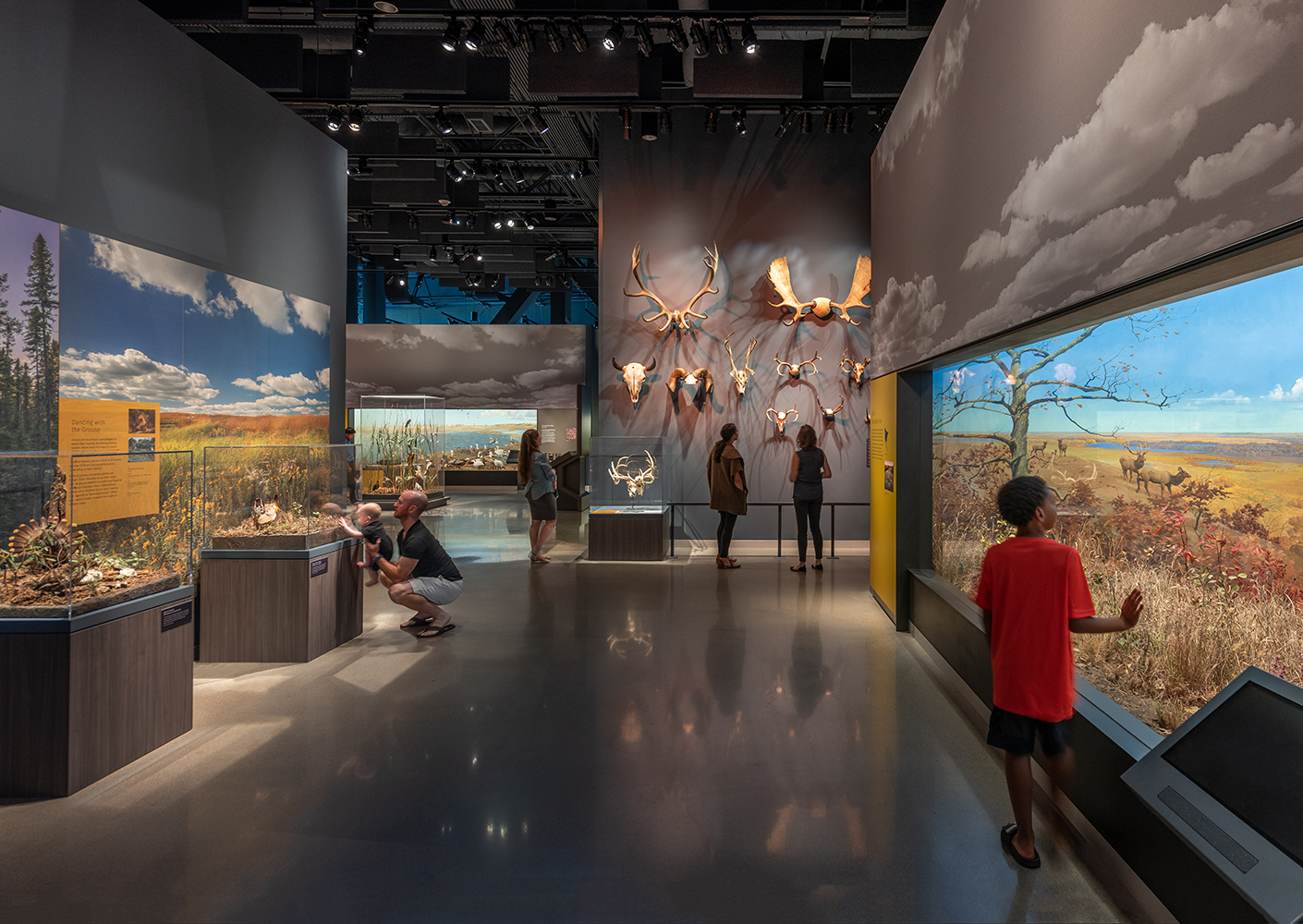
The new Bell Museum is located as a gateway to the Saint Paul Campus of the University of Minnesota, and showcases the University’s reputation for innovative research, education, and public engagement. The three glass-and-wood storyboxes act as lenses between interior space and the adjacent landscapes. They engage the community, and inspire visitors to connect across time between environmental experiences from the past, and environmental experiences that are immediately present.

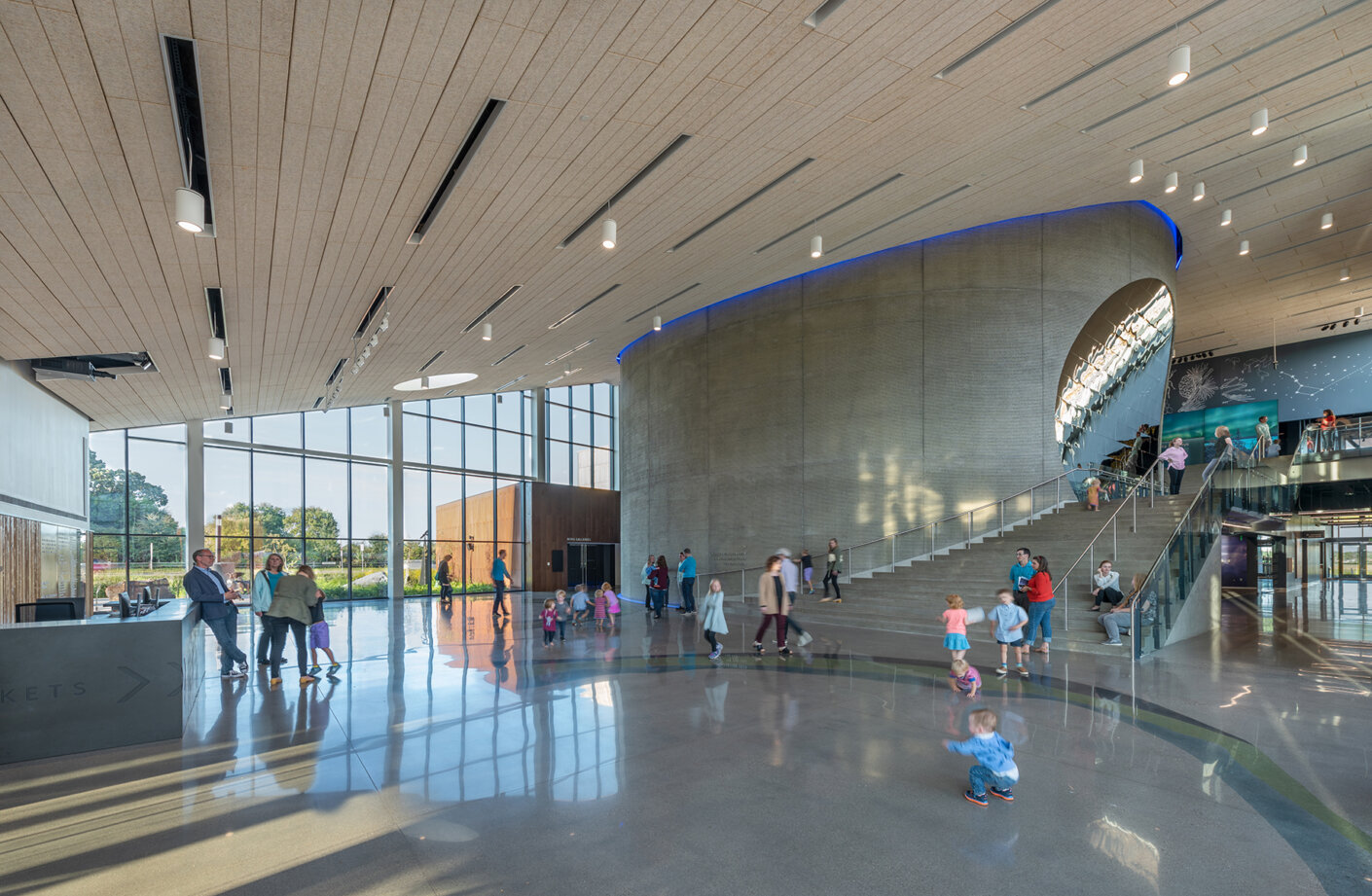
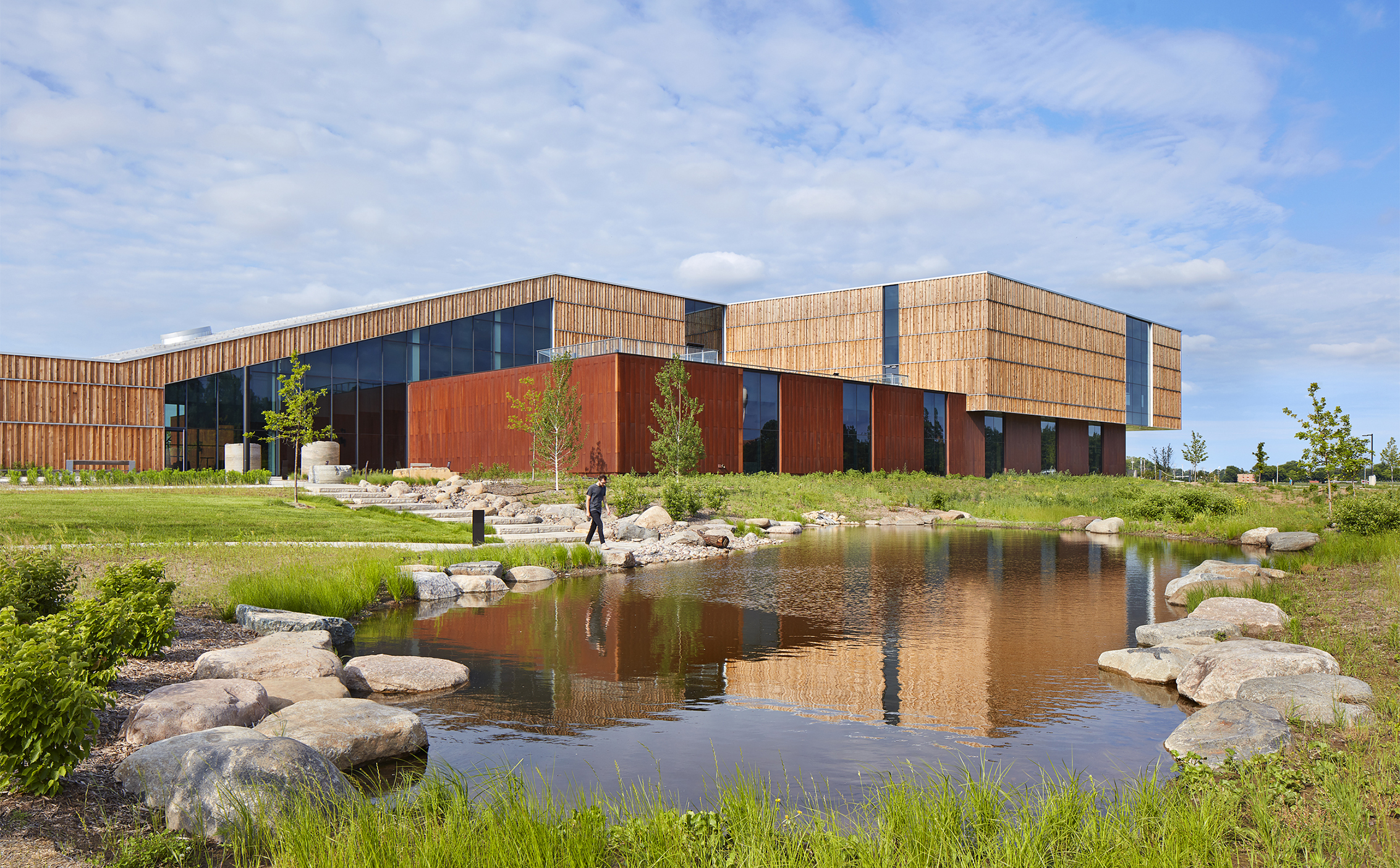
Rain gardens gather and filter all of the parking lot stormwater and send it into the ground and recharging the aquifer located below the site. Nutrient-rich bee lawns and meadows provide habitat for the endangered Rusty Patch bumblebee and a wide range of other essential pollinators. The building is designed to operate efficiently reducing its carbon footprint by more than 70% relative to comparable buildings and as a result, it protects life around the planet from the ravages of climate change.
